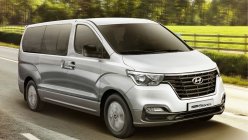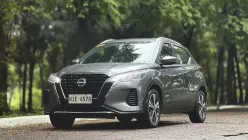As the cliché goes, ‘better late than never,’ which could very well describe the Nissan LEAF’s delayed arrival to Philippine showrooms. The second-generation electric vehicle certainly took its sweet time in coming here, considering four years have passed (enough time for a mid-cycle refresh) since making its global debut.
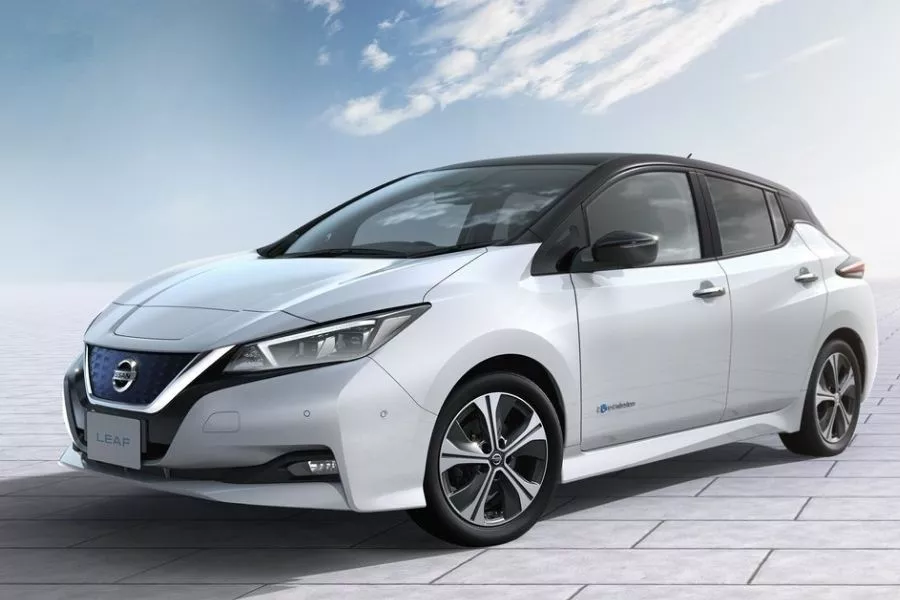
The Nissan LEAF finally reaches our shores
Fans of electric vehicle (EV) tech will have something to look forward to, but what about the rest of the market? In the pilot edition of Philkotse’s Shift Happens podcast, host Stanley Chi discussed the Nissan LEAF’s prospects in the country with the Philkotse editorial panel.
Content manager Jacob Oliva expressed the LEAF’s main attribute in lacking a combustion engine. “Electric nga siya, so hindi ka magga-gas. Hindi ka pupunta ng gasoline station para magpa-gas.” (It’s electric, so it doesn’t need gas. You won’t have to go to a gasoline station to fuel up.)
He likens it to a regular appliance that simply needs to be plugged in for charging. This is a strong selling proposition for the model, considering that petroleum prices in the Philippines among the most expensive in the world.

Stanley Chi (top right) engages the Philkotse editorial panel on the maiden episode of Shift Happens
But a sticker price of Php 2,798,000 might not be something that majority of the market would go for. “Maraming nagulat doon sa presyo niya, to be honest,” explains content editor Martin Aguilar. “Ang defense ni Nissan is because merong import duties na kailangang bayaran, which is around 30 percent.” (Many were shocked at the rather high cost, to be honest. Nissan justified the pricing because of the import duties to be paid on the model, around 30 percent.)
Asked if the LEAF could be considered ahead of its time in the country, content lead Joseph Estabillo replied, “In a way, although hindi naman siya yung kauna-unahang EV na dumating dito. There have been others…I think this would probably be one of the first from the mainstream brands.” (In a way, although the LEAF is far from the very first EV released here. I think this would probably be one of the first from the mainstream brands.)
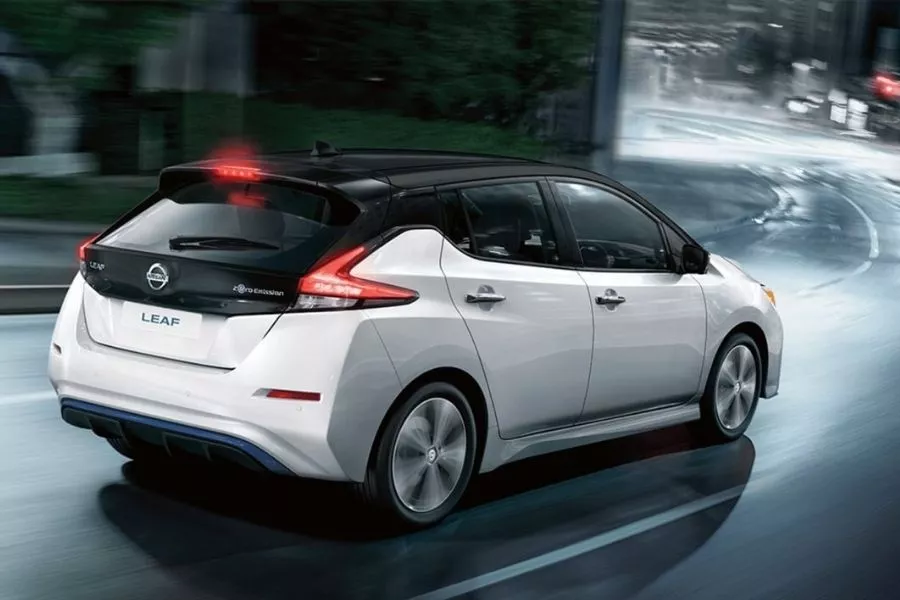
The LEAF should be good for a week of commutes between home and office on a full charge
Korean carmaker Hyundai previously marketed two of their EV models here, namely the Ioniq electric and the Kona EV, priced at Php 2.05 million and Php 2.38 million, respectively. Both models have since been dropped from the lineup. The rest of the local EV offerings mostly come from Chinese marques such as those from BYD, Chery’s Arrizo 5e, and Changan’s Eado EV460.
Korean carmaker Hyundai previously marketed two of their EV models here, namely the Ioniq electric and the Kona EV, priced at Php 2.05 million and Php 2.38 million, respectively. Both models have since been dropped from the lineup. The rest of the local EV offerings mostly come from Chinese marques such as those from BYD, Chery’s Arrizo 5e, and Changan’s Eado EV460.
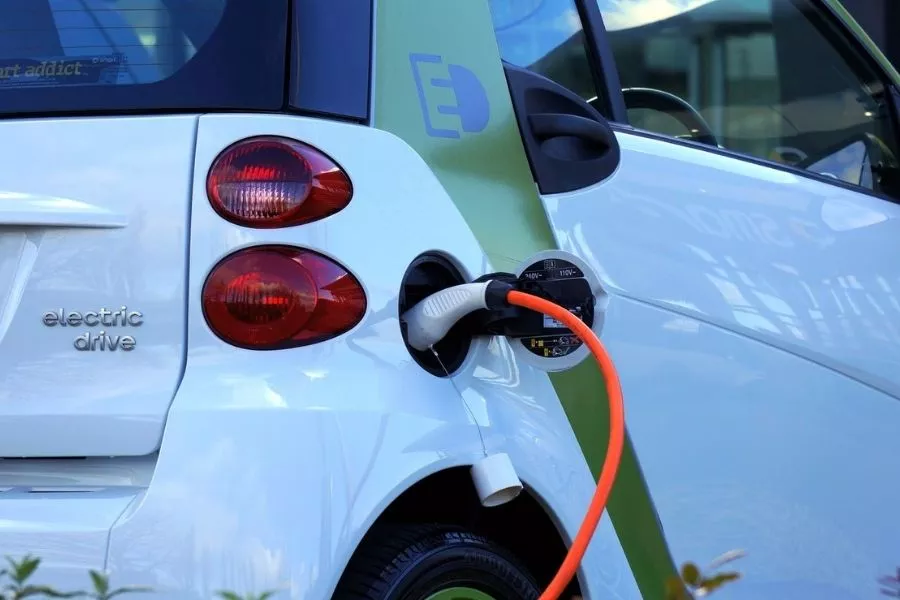
One obstacle to widespread EV adoption is the lack of available charging stations
Despite the presence of EVs in the market prior to the LEAF, Jacob points out that the segment has yet to find broader success among a greater section of its target customers. “Sa totoo lang, ang number one talaga na malaking tulong para EV industry…is gobyerno. Dalawa yan eh, infrastructure saka taxes.” (To be honest, government plays the biggest role in helping the EV industry through two things: infrastructure and taxes.)
Owning technologically advanced EVs such as the LEAF would be challenging if no charging network exists to support them. In other countries, he adds, there are financial incentives for customers to purchase EVs, and those are initiated by the government.
For his part, Joseph says that the lack of infrastructure problem could have been addressed with a transitional hybrid vehicle such as the Kicks e-Power. “That would have been a very good transition to electric vehicles,” he notes. “Pag sinabing hybrid vehicle ang isang sasakyan, gumagamit siya ng combustion engine with an electric motor. Ano ang special dito sa Kicks e-Power? Meron siyang combustion engine pero hindi nakakonekta sa gulong.”
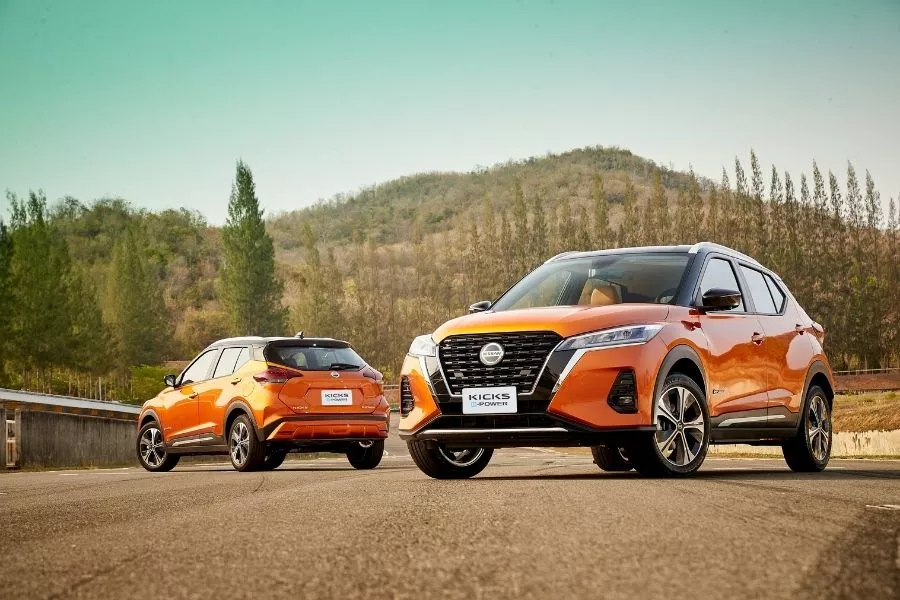
One workaround to the infrastructure problem could have been hybrid vehicles such as Nissan's Kicks e-Power
(When you say hybrid vehicle, it uses a combustion engine with an electric motor. What’s special about the Kicks e-Power is that the combustion engine isn’t connected to the wheels.)
A series hybrid system such as e-Power negates the need for an external charging system since the combustion engine supplies the necessary electrical power through an onboard battery. And since the engine doesn’t spin the wheels directly, it’s free to run at its most efficient speed even when the vehicle is standing still, reducing emissions.
Nevertheless, Jacob adds that there are still many misconceptions about EVs that people need to shed, especially when it comes to range. “Yung LEAF naman, yung range niya is pang-Pilipinas talaga. Yung Pilipinas kasi short drive country ito eh, hindi ganun kalalayo ang drive dito. So 311 kilometers of range, sobra-sobra na yun.” (The LEAF’s range is appropriate for the Philippines since relatively short drives are the norm here. The 311-km. range is more than enough.)
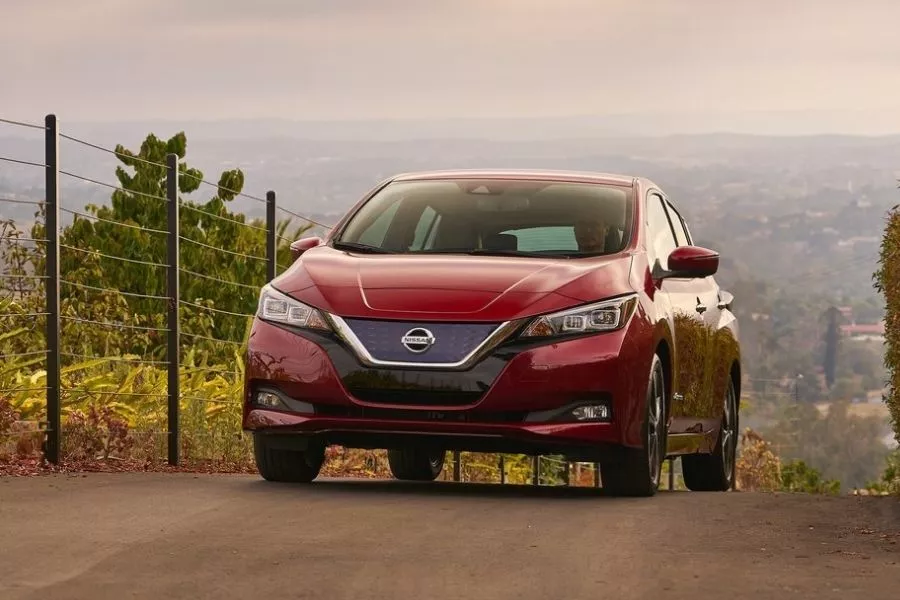
Overcoming the challenges met by EVs is one of the LEAF's missions
For Martin, EVs are the future of mobility, especially with ASEAN countries already starting to shift away from combustion engines. “The good thing is, parang indication siya ng early adoption ng Philippines sa electric vehicles. Inaantay lang natin talaga yung concrete policies and better incentives, and syempre more charging stations para mawala sa mga tao yung range anxiety.”
(It’s an indication of the Philippines’ early adoption of electric vehicles. We’re still waiting for concrete policies, better incentives, and more charging stations so that range anxiety won’t be an issue.)
More insightful discussions to power automotive knowledge at Philkotse.com.
Know more about Nissan LEAF 2025

The Nissan LEAF 2025 Philippines is a 5-door hatchback fitted with an all-electric powertrain. It is offered in the Philippines with one variant only which is priced at Php 1,998,000. Powering this electric vehicle (EV) is a synchronous electric motor capable of generating 148 horsepower and 320 Nm of torque. A 40-kWh lithium-ion battery is used, which aids the model's 311 km range. Only a single-speed gear reduction system is utilized to exclusively send power to the front wheels.
Dimensions-wise, the LEAF has a length of 4,490 mm, a width of 1,788 mm, and a height of 1,540, with ground clearance and wheelbase rated at 155 mm and 2,700 mm, respectively. This is the first and only commercially available EV in the country. But in the all-electric options, the alternatives of Filipino car buyers include the Porsche Taycan, Hyundai Ioniq EV, and BYD E6.
>>> New and used Nissan LEAF 2025 for sale in the Philippines
Nissan LEAF Launch
The first-generation Nissan LEAF was initially introduced in the United States and Japan in December 2010. Due to its striking road presence and overall impressive performance, it gained recognitions such as the Green Car Vision Awards in 2010, the European Car of the Year and the World Car of the Year both in 2011 and the Car of the Year Japan for two consecutive years. Also, this multi-awarded electric vehicle is acclaimed as the world’s top-selling as of December 2019.
The second-generation Nissan LEAF was unveiled in October 2017. It was made available in the US and Europe a year later. The Nissan LEAF made its Philippines debut in May 2021. Nissan Philippines is offering the LEAF at Php 2,798,000. Available colors for the 2025 Nissan LEAF with the two-tone blacked-out roof include Pearl White, Vivid Blue, Gun Metallic, and Magnetic Red.
Nissan LEAF Exterior
The new Nissan LEAF comes with a sporty exterior design, and it looks similar to the global model that’s currently being sold in Japan, the United States, and Europe. In terms of dimensions, the LEAF electric vehicle measures 4,480mm long, 1,790mm wide, and 1,540mm tall. It also has a wheelbase of 1,540mm and a ground clearance of 155mm.
The Nissan LEAF is fitted with halogen headlamps with LED daytime running lights. It also has front fog lamps and a rear fog lamp, rain-sensing wipers, electronically adjustable and foldable front mirrors, and a rear wiper. The said electric vehicle also comes with Nissan’s signature V-motion grille. The LEAF is finished off with a set of 16-inch alloy wheels, wrapped with 205/55R16 tires.
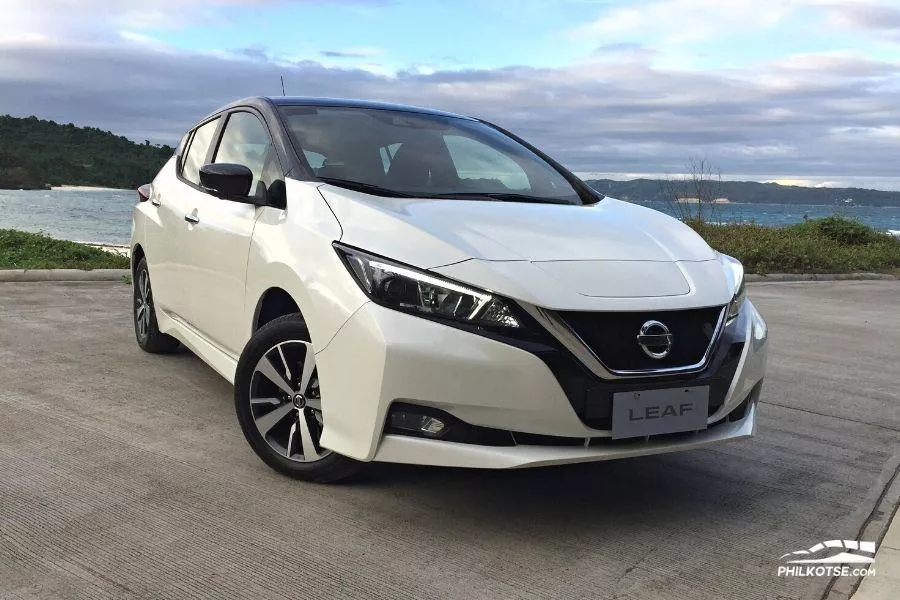
Nissan LEAF Interior
The Nissan LEAF 2025 can accommodate up to five occupants. It has a dark interior theme along with an automatic climate control system, and fabric-clad seats. The LEAF also comes with a six-way manually adjustable driver’s seat, a leather-wrapped steering wheel with tilt adjustment, a push-to-start button, and a multi-information meter.

Technology & Safety Features
The LEAF Philippines is integrated with several techs and safety features. Placed at the center of the dashboard is an eight-inch touchscreen with Apple CarPlay and Android Auto. It also comes standard with a 360-degree view camera that can detect moving objects. The LEAF also has a driver attention alert system that warns one of the things moving in the car’s blind spots, rear end, and whenever you’re departing a lane. Adding to the list of the LEAF’s features are the following: hill-start assist, vehicle dynamic control, and anti-lock braking with electronic brake-force distribution. On the more passive side, the Nissan-made EV comes with a total of six airbags.
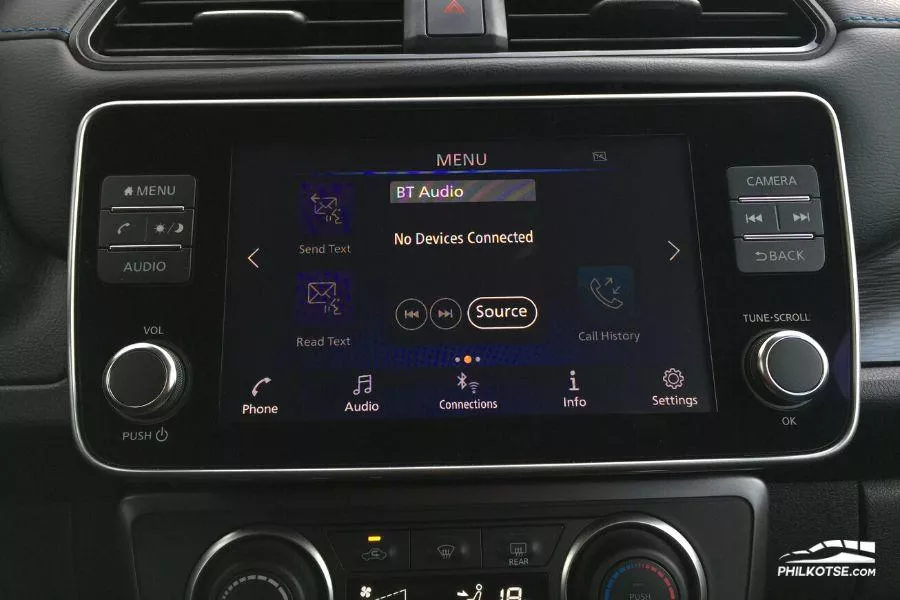
Platform & Chassis
The new Nissan LEAF is fitted with an independent front strut suspension and torsion beam suspension at the rear.

Engine & Drivetrain
The Nissan LEAF EV is powered by an electric motor that delivers 148 hp and 320 Nm of torque. Power is sent to the front wheels via a single-speed gear reduction system. The Nissan-made EV uses a 40-kWh lithium-ion pack with a 311-kilometer range. This can be charged with your bog-standard wall outlet, and doing so will fill it up fully in 15 to 18 hours. However, a quick charging station cuts down the LEAF’s charging time down to just 40 minutes to an hour.
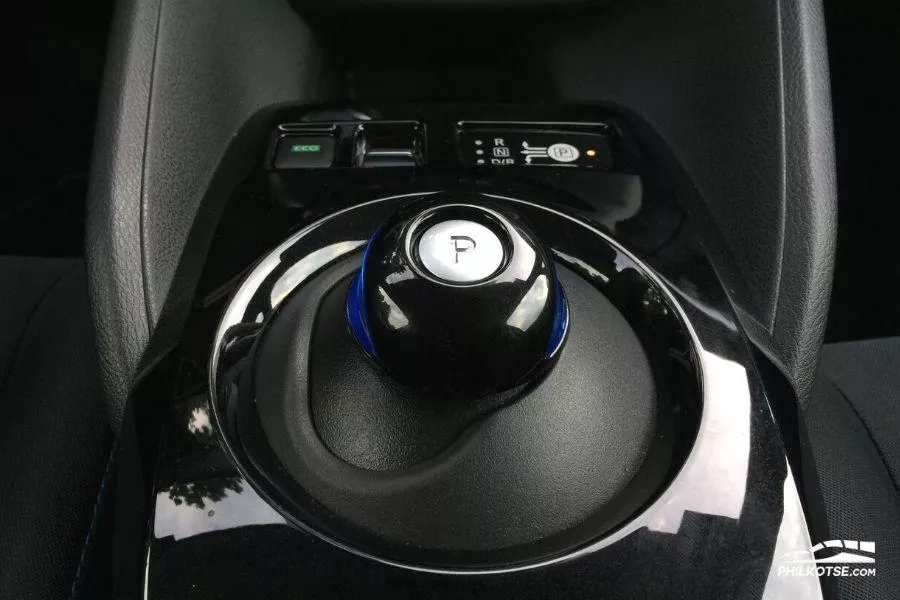
Available colors for the Nissan LEAF are Gun Metallic, Vivid Blue, Magnetic Red, and Pearl White, all of which come with a Pearl Black roof.
The Nissan LEAF still doesn't have a lot of competition in the country as the local EV market is still relatively new.
Nissan LEAF 2025 Price List
| Variant | Price |
|---|---|
| Nissan LEAF 40kWh | ₱1,998,000 |
Nissan LEAF Pros & Cons
Pros
-
Offers 311 km of range
-
Sleek styling with the two-tone finish
-
Cheaper to run combustion engines
Cons
-
Relatively expensive price tag
-
EV infrastructure is still in its early stages.
-
First-time EV owners might expect more in terms of driving experience
Nissan LEAF FAQs
1. How much does a Nissan LEAF 2025 cost in the Philippines?
In the Philippines, it is available in one variant which is priced at P1,998,000.
2. What problems does the Nissan LEAF have?
Nissan LEAF had some issues about reliability, with some electrical and brake concerns.
3. What is the body type of Nissan LEAF?
The body type of LEAF is a hatchback.
4. Does the Nissan LEAF 2025 have a reverse camera?
Yes, it does. With the reverse camera, you can see what is behind the car on the screen.
5. What is the Length of Nissan LEAF Philippines?
The length of LEAF is 4,490 mm.
₱ 1,998,000
ExploreRecent posts
- NIssan LEAF range Philippines May 11, 2021
- nissan leaf charging methods Jul 27, 2021
- 2021 Nissan LEAF Philippines launch Jun 04, 2021
- electric vehicle ownership Nov 24, 2022
- electric vehicle myths Dec 08, 2020


